What is a Water Heater Pressure Relief Valve?
A water heater temperature pressure relief valve or T&P valve is a safety device required to be installed on all tank-type water heaters. Its purpose is to open briefly and release water from the water heater in order to lower the pressure in the event that the water heater becomes over-pressurized or overheated.
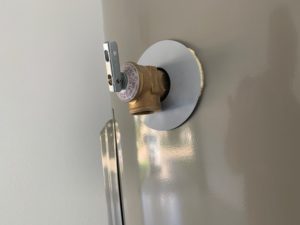
A Typical Water Heater Pressure Relief Valve
Without this relief valve, an over-pressurized water heater could explode causing serious injury, property damage, and even death.
Although it is not a common occurrence for a water heater to become over-pressurized, so T&P valves do not actuate frequently.
Nevertheless, to increase the safety within our homes, pressure relief valves have been required on water heaters since the 1960’s.
NOTE: The terms pressure relief valve, T&P (Temperature & Pressure), TPR (Temperature Pressure Relief), and popoff valve all refer to water heater pressure relief valve and will be used interchangeably in this post.
What Does the Pressure Relief Valve on a Water Heater Do?
Most T&P valves are designed to open and relieve pressure in the water heater if either of two conditions occur:
- If the pressure reaches 150 pounds per square inch (PSI)
- If the temperature reaches 210° Fahrenheit.
T&P valves are designed to open if the pressure in the water heater reaches 150 psi, or if the temperature reaches 210 degrees.
Water heaters are designed to withstand pressures of at least 150 PSI, so the relief valve is designed to prevent the water heater from rupturing.
Why is a Rupturing Water Heater So Dangerous?
A rupturing water heater may not sound so dangerous. All it’s going to do is allow water to run all over and damage flooring and walls. Right?
Flooding your home with water may sound bad enough – and if you are lucky, that will be all that happens if your water heater ruptures.
The BIG DANGER that you need to be concerned about is that a rupturing water heater can explode and cause serious property damage, injuries and even death
This is because you have a tank full of 30 – 50 gallons of superheated water.
Let me explain.
Superheated water is water that has been heated above its normal boiling point (212° F), but because of the higher pressure, the water does not boil, but remains a liquid.
If you have ever camped in the mountains and cooked or boiled food, then you know that cooking times are different in the mountains than they are at sea level. This is because the atmospheric pressure is lower at higher elevations which makes the boiling temperature of water lower in the mountains, so you have to cook your food longer.
On the other hand, the boiling temperature is higher at lower elevations where the atmospheric pressure is higher.
The fact that there is a tank full of superheated water is what makes a rupturing water heater so dangerous.
When water changes from a liquid to a vapor (when it changes from water to steam), it expands to many times its original volume. In fact, water will expand and fill a volume about 1600 times its original volume when it changes from a liquid to a vapor.
When an over-pressurized water heater ruptures, the pressure will immediately drop to atmospheric pressure. This drop in pressure will cause the superheated water, to instantly change from a liquid to a vapor (from water to steam).
When this change occurs, 40 gallons of water will become 64,000 gallons of steam essentially instantaneously.
(40 gallons x 1600 = 64,000 gallons)
When a water heater ruptures, 40 gallons of water can become 64,000 gallons of steam instantaneously.
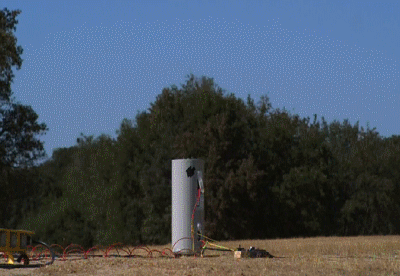
This rapid change in volume can result in a tremendous explosion. (Watch this video to see a rupturing/exploding water heater.)
Here is a news story about a home that was destroyed by an exploding water heater.
The explosive power of expanding steam is why we don’t want our water heaters to rupture.
The possibility of an exploding water heater is why we must have a properly functioning relief valve installed on our water heater.
It is a rare event that a water heater ruptures and explodes – because several uncommon circumstances must occur in order for this to happen.
However rare it may be, it is still important to protect against this happening.
First, you need to locate the relief valve on your water heater.
Where is the Water Heater Relief Valve Located?
A T&P valve is installed in the upper six inches of the water heater where the temperature will be the highest.
Therefore, if you look at your water heater, you should find the relief valve installed into the top of the water heater or in the upper part of the side of the water heater.
Here are some photos to help you to locate the TPR valve on your water heater.
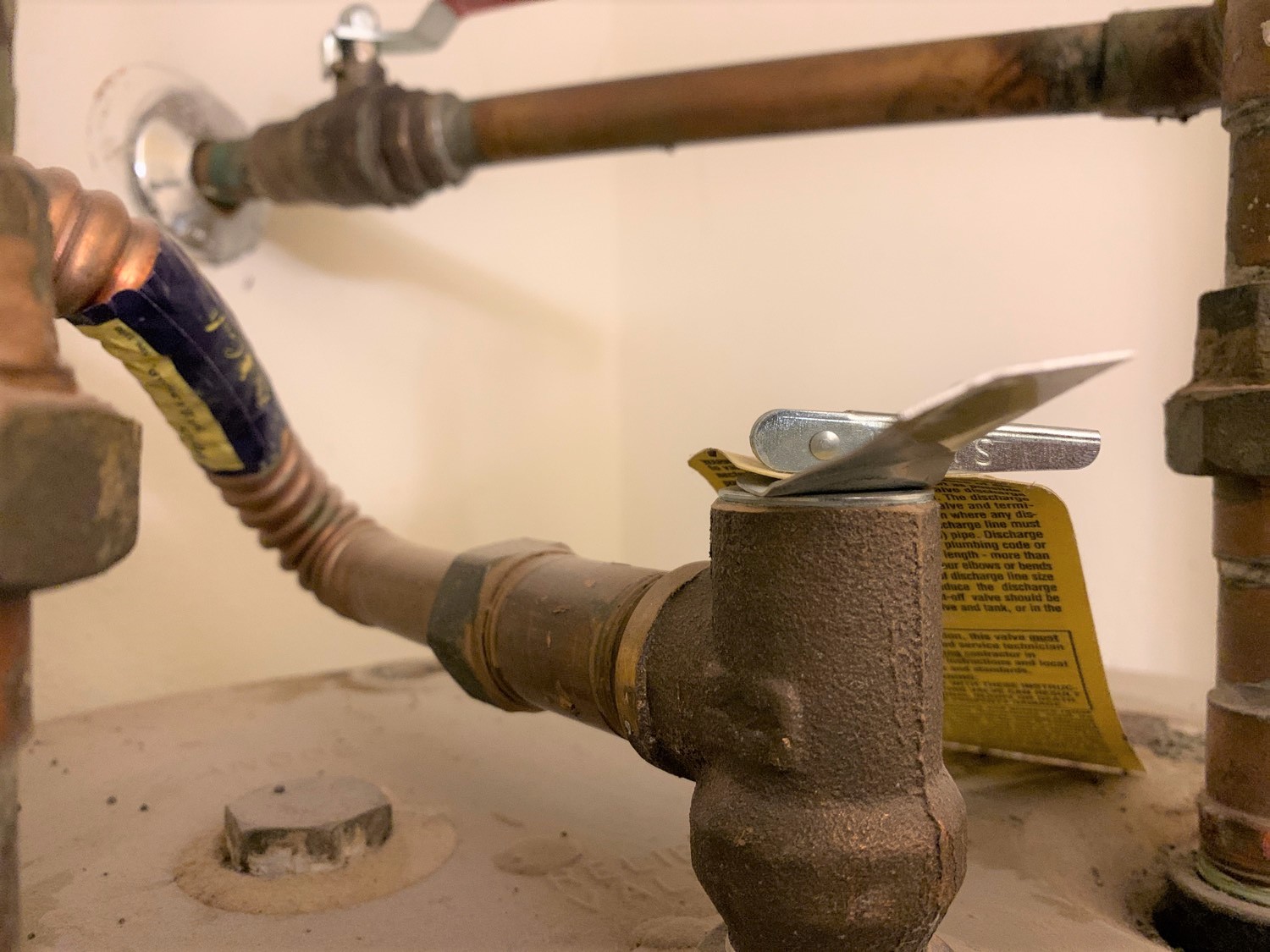
TPR valve on top of a water heater
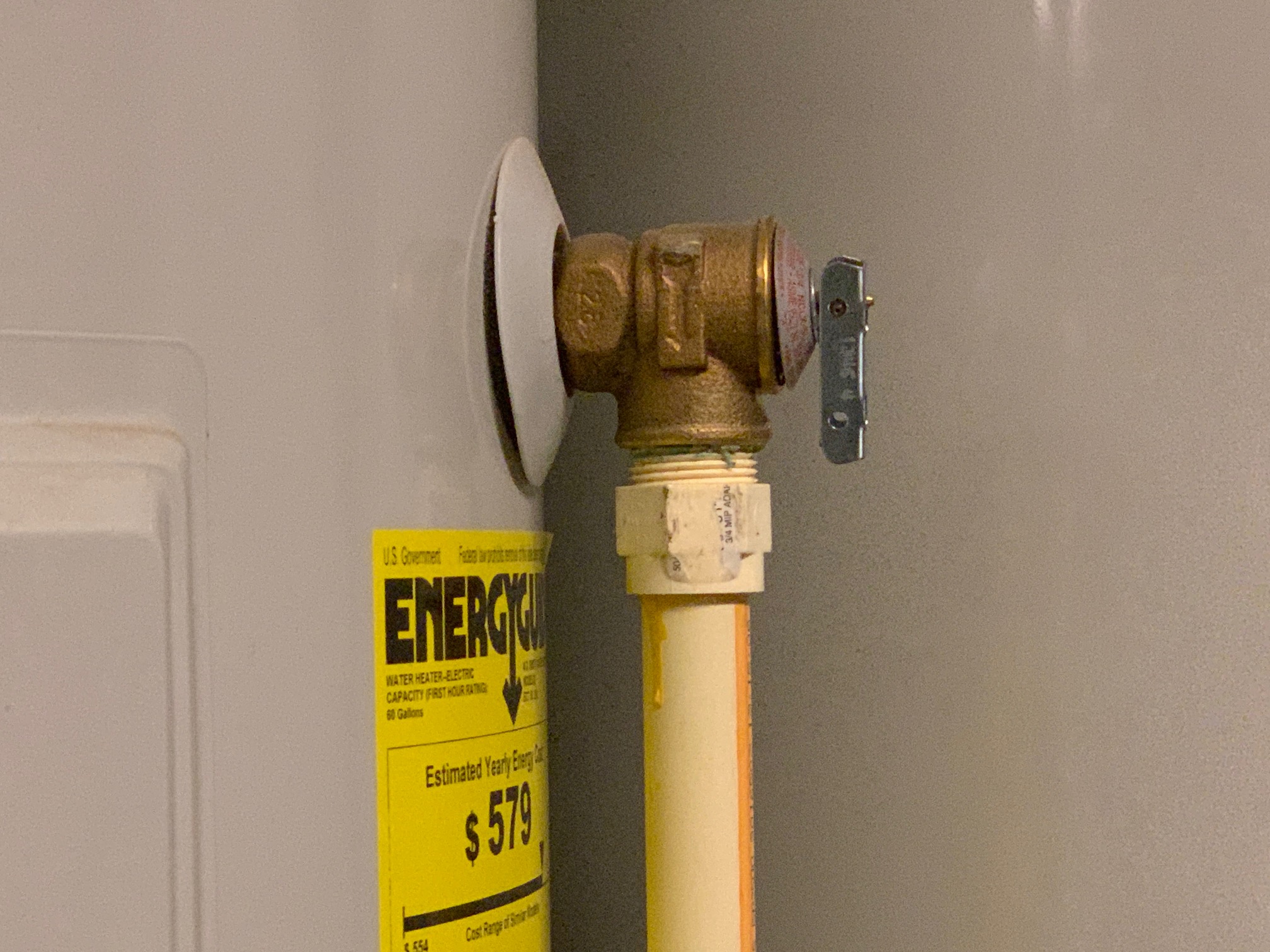
TPR valve on the side of a water heater
How to Test Your Water Heater TPR Valve
It is important to test your TPR valve regularly to ensure that it is working properly.
Testing these is a simple process.
It is recommended that you test your TPR valve at least once or twice a year to ensure that it is working properly.
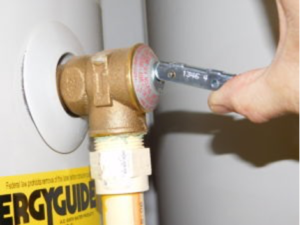 To test it, simply raise the lever on the relief valve for a few seconds and ensure that you hear and see water flowing freely out of the discharge line on the valve.
To test it, simply raise the lever on the relief valve for a few seconds and ensure that you hear and see water flowing freely out of the discharge line on the valve.
If you do not hear water flowing when you test it, or if you only get a trickle of water, then the valve needs to be replaced.
If you have some basic handyman skills, this is a simple thing to do.
If you have any doubts about your ability, please contact a licensed plumber to do this for you.
WARNING: If there is no discharge line on the T&P valve, do NOT test it until you have had a proper discharge line installed.
Testing the valve without a proper discharge line could allow you to be burned by steam or very hot water. A discharge line will safely direct the hot water and steam away from the valve.
Why is My Water Heater Relief Valve Leaking?
Sometimes, testing the TPR valve can cause it to leak.
Sometimes the seal just wears out.
At other times, the valve has had to open to relieve pressure, and simply did not close completely.
Corrosion, mineral deposits, or other buildup in the water heater sometimes get in the way and prevent the valve from closing or seating properly after opening.
How to Fix Leaking Relief Valve on Water Heater
If you have noticed some water in the pan under your water heater or have noticed water dripping out of the discharge pipe on your water heater, then your water heater relief valve is likely leaking.
Perhaps you tested the relief valve as recommended in this post, and now it is leaking.
Often simply opening and closing the valve a few times will clear the blockage and allow the valve to seat(close) properly and stop leaking.
(Keep in mind that some water may continue to drip out of the pipe for a minute or so after the valve is opened just because the interior of the pipe has some water in it, so if you’ve tested it, wait a minute or two to make sure if it is or is not leaking.)
If it continues to leak after opening and closing it a few times, here are a couple of other things to try.
- Shut off the water to the water heater and then operate the lever on the relief valve a couple of times. Turn the water back on to the water heater and check for leaks.
- If #1 did not work, tap lightly on the TPR valve with something solid such as the handle of a screwdriver. Remember, I said tap LIGHTLY. Then open and close the valve a couple of times.
- If the leak still doesn’t stop, then the valve will need to be replaced.
Here is a great link to more information about leaking TPR valves. https://structuretech1.com/leaking-relief-valve/
So now you know what a TPR valve is, what it does, why you need one on your water heater, and how to test it to ensure that it is working properly.
Testing it occasionally to ensure that it is working, and replacing it, if necessary, is a quick and simple thing that you can do to ensure that your water heater does not become a danger to your family.
If you have any questions about T&P valves or about this article, please leave a comment or feel free to contact me.
© 2021 Mike Morgan
This article was written by Mike Morgan, the owner of Morgan Inspection Services. Morgan Inspection Services has been providing home, septic and well inspection services throughout the central Texas area since 2002. He can be reached at 325-998-4663 or at mike@morganinspectionservices.com. No article, or portion thereof, may be reproduced or copied without prior written consent of Mike Morgan.

